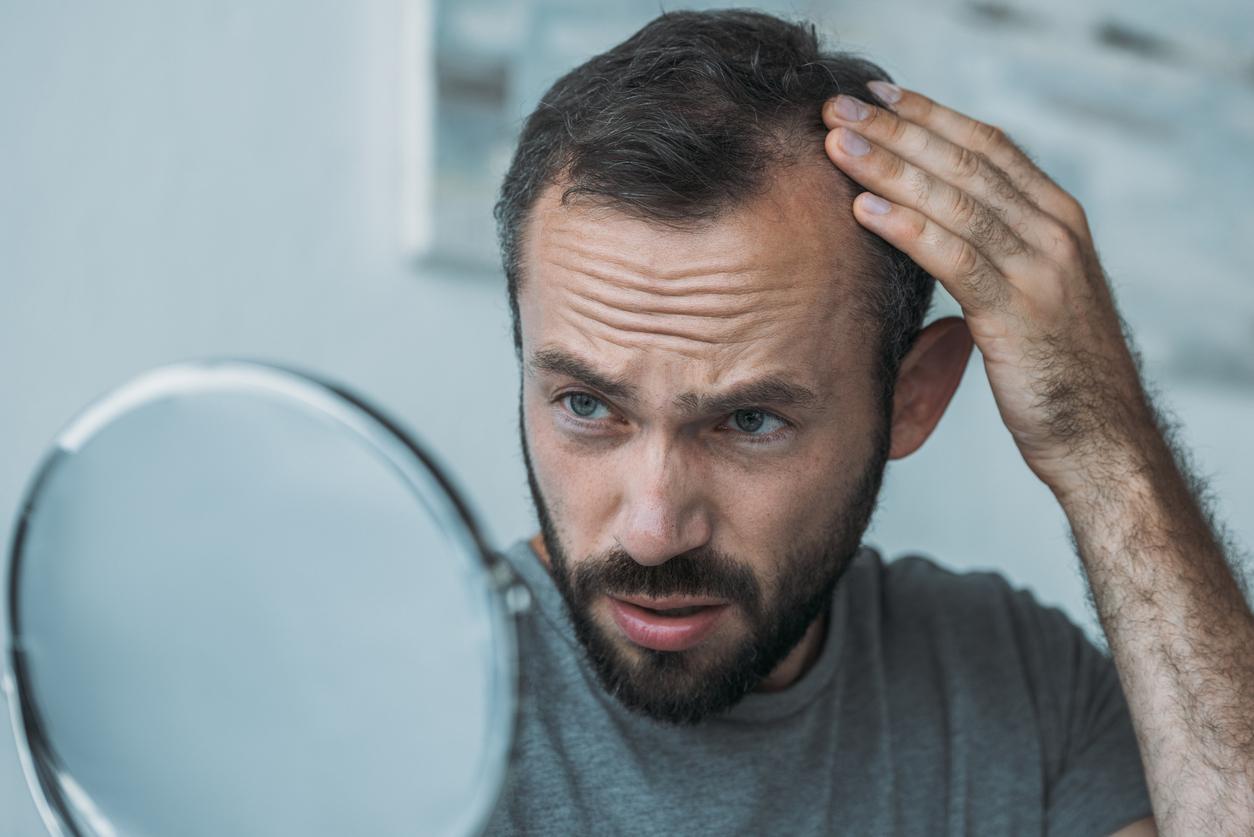
Hypertrichosis and Hirsutism
Dark hair on your upper lip? Shave your legs every day? Then you may be suffering from excess hair. What is the cause and what different treatments are there?
There are two forms of excessive hair growth: hypertrichosis and hirsutism. They usually occur separately, but sometimes combined. Hypertrichosis is excessive hair growth in places where there is already some natural hair growth.
Above average hair growth
Fine hairs appear on the face, temples and eyebrows. Hairs on the arms are longer and their number is growing. The lower legs and torso are usually also more hairy. Although this above-average hair growth is undesirable, it usually falls under the ‘normal variation’. Hypertrichosis occurs in both men and women and develops at the end of puberty.
We speak of hirsutism when hair growth occurs in women in places where usually only men develop hair. A lot of hair then appears in places where women usually only have down hair: on the upper lip, cheeks, chin and neck, around the nipples, on the chest, back, abdomen and in the groin area.
Hair growth is also stronger on arms and legs and the hair is somewhat thicker. A mild form of hirsutism in women is normal, especially after the menopause. Almost all older women have to shave their ‘mustache’ and get hairs on the chin.
just bad luck
If the cause of the excess hair is unknown, the medical term is primary or idiopathic hirsutism. Both hypertrichosis and hirsutism can occur without an apparent ‘abnormality’ or disease. You just have the ‘bad luck’ that you are quite hairy. And that usually applies to the rest of your family as well.
Hair is also strongly breed specific. Northern European fair-skinned women usually have little noticeable body hair, while Mediterranean women are more hairy. Many Eastern women epilate their facial hair on a weekly basis. In some cases there is a clear congenital cause.
Sometimes a baby already has one excessively hairy spot at birth, for example a strongly hairy, large birthmark (Tierfell nevus). In some families there is ‘werewolf syndrome’, a genetic predisposition to an extreme form of hypertrichosis, in which almost the entire body is densely haired.
Disruption of the hormone balance
The most common cause of hirsutism is a hormonal imbalance. Some women with hirsutism have an increased amount of androgens or testosterone, male hormones, in the blood. Overproduction of these hormones can occur in the adrenal cortex (rare) and the ovaries.
A relatively common cause is Polycystic Ovarian Syndrome (PCOS), where menstruation is also irregular. Less commonly, a hormone-producing tumor is the culprit. Patients with hormonal hirsutism also sometimes have other symptoms of masculinization, such as a lower voice, enlargement of the muscles and clitoris, and little breast tissue.
Much more often the hair follicles are simply hypersensitive to a normal amount of male hormones. For example, a normal testosterone level can still cause enhanced hair growth.
Medicines as a cause
There are some medications that can cause excessive hair growth. The most important are the hormone preparations that women in the menopause use against menopausal symptoms. Anabolic steroids, the muscle-enhancing “gym pills,” can also lead to hirsutism. Excess hair is a (lifelong) side effect in patients who use Cyclosporine (an immunosuppressant) after an organ transplant.
Smooth is the norm
In our society, body hair is seen as undesirable. Glossy’s show smooth legs, bald armpits and not a single downy hair on the upper lip. Nowadays it is also very common among young women to shave the vulva close.
Hair removal is of all times and all cultures. As far back as ancient Egypt, body hair was removed using a depilatory cream and tweezers. Eastern women do wonders with threads to remove hair from their faces. Many people find smooth skin not only beautiful and pleasant, but also more hygienic.
For women with hirsutism, excessive hair is a major problem. They are ashamed of their hairy legs and face. They spend a lot of money and time shaving and waxing or bleaching their dark leg hair. For some, the excessive hair is their whole life. They even get psychological problems and do not dare to leave the house.
Treatment with hormones
Hirsutism does not go away on its own. During pregnancy, under the influence of the higher amount of female hormones, some improvement can occur. If you find the excessive hair very disturbing cosmetically, you should first have the cause of the hair examined by your doctor or general practitioner.
A level of male hormones that is too high can be treated with medication. The contraceptive pills Diane-35 or Minerva often give good results. Diane-35 contains cyproterone acetate, a hormone similar to the female sex hormone progesterone. It is also anti-androgenic, ie it counteracts the action of male sex hormones.
An (additional) treatment with cyproterone acetate (brand name Androcur) is a second solution. With a hormone treatment, hair growth decreases after half a year to a whole year and/or the existing hair becomes thinner. In principle, you can continue the hormone treatments for a very long time.
Remove excess hair
If no hormonal cause can be identified, you can remove the excess hair. There are two different ways: depilation methods and epilation methods. In depilation, the hair is removed somewhere in the hair shaft. Then you can shave the hair or pull it loose with wax. Depilation also falls under depilation with (chemical) depilatory creams.
In epilation, the hair including the hair follicle is removed or destroyed. The hair follicle is then permanently destroyed and a hair never grows back. It is best to have dark hair removed with a laser. The light from the laser only penetrates the pigment cells in the hair roots and is then converted into heat.
The follicle is then, as it were, ‘cooked’ and dies. The so-called ‘flash lamps’ work in a similar way. Multiple treatments are required for laser treatment, because the hair root is only sensitive to the laser during the growth phase.
Because gray or light blond hairs hardly contain any pigment, they cannot be heated with laser. Electric epilation is the best solution for removing light hairs. A skin therapist or specialist beautician inserts a thin needle into the skin pore of the hair and applies current to it for a few seconds. Then the follicle dies. A big advantage of this technique is that each hair can be treated separately. That is also the disadvantage, because it is a very time-consuming and sometimes painful process.
The social consequences of hirsutism can be so serious that there is a medical necessity for hair removal. Laser hair removal and electrical epilation on the face in women are in most cases (fully or partially) reimbursed. Sometimes it depends on a supplementary insurance package. You must then request the treatment with a medical statement from a general practitioner or dermatologist.

















